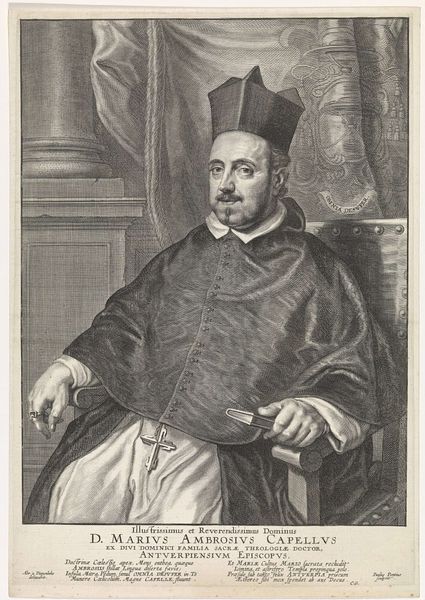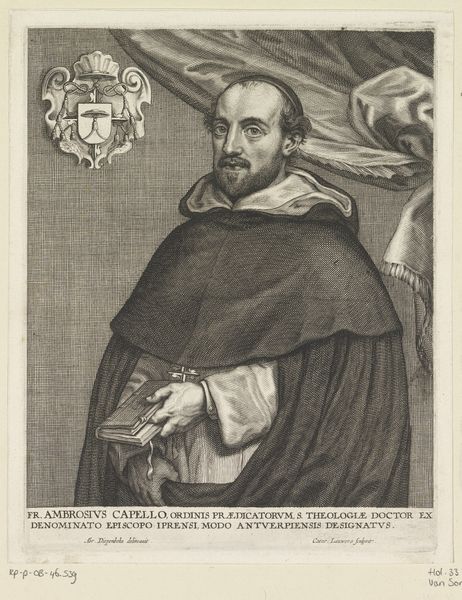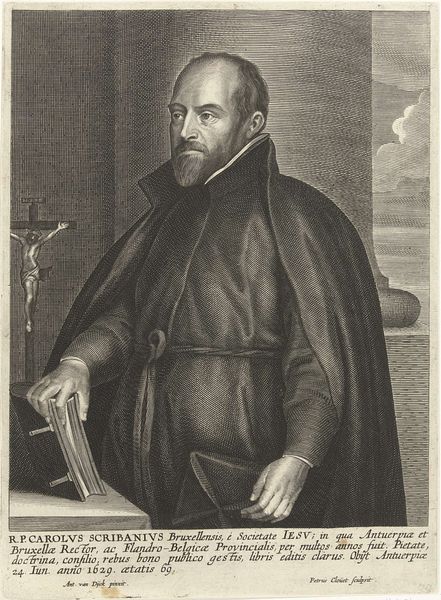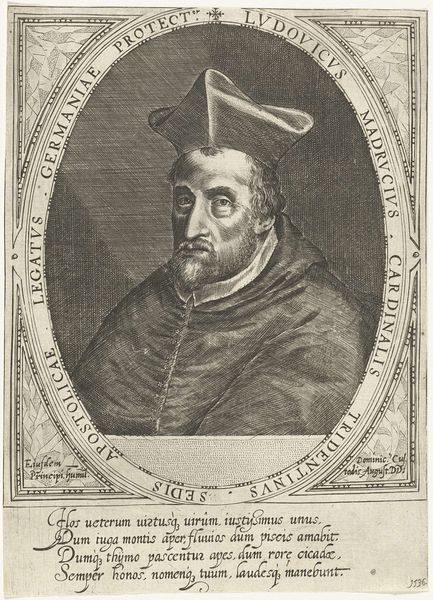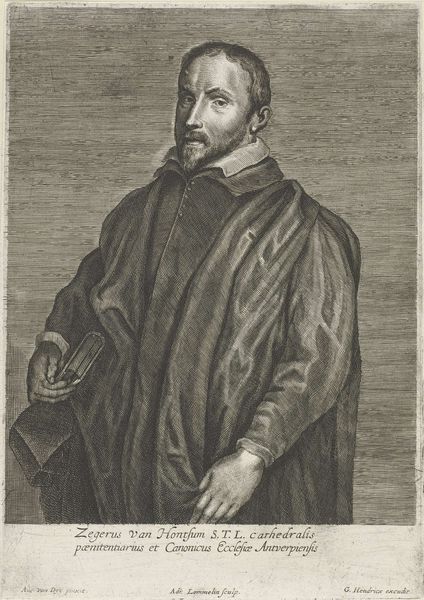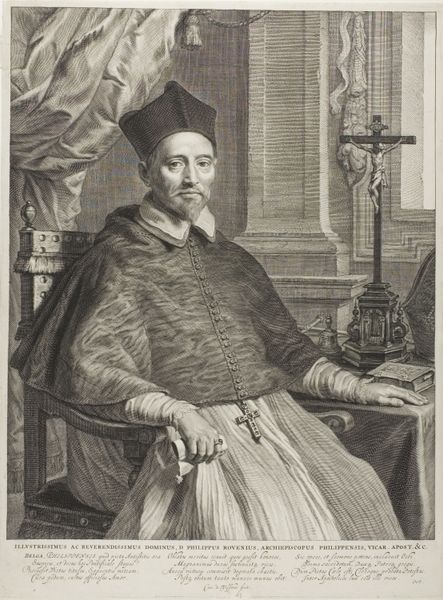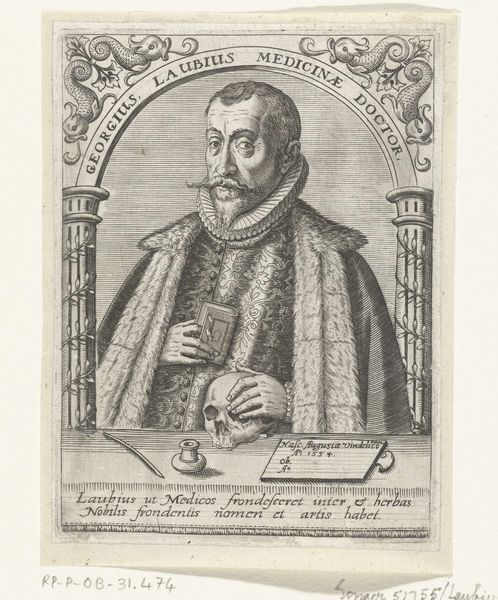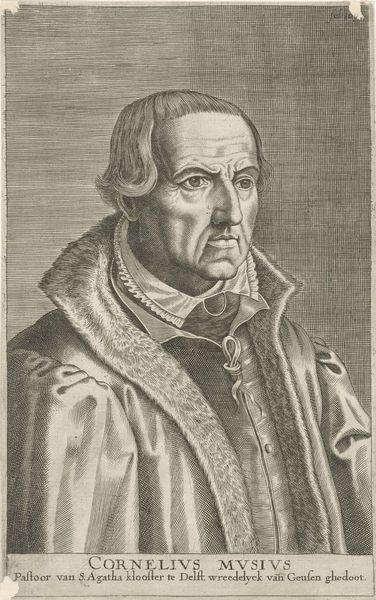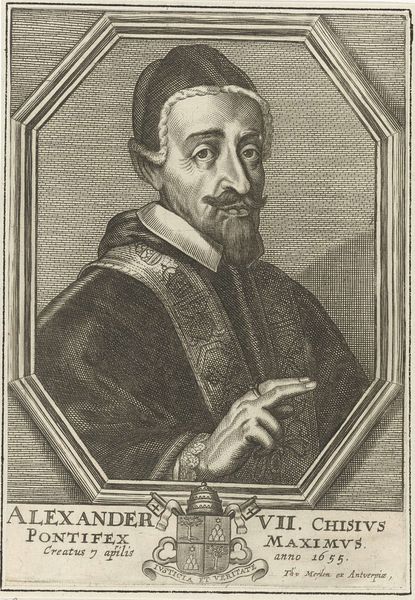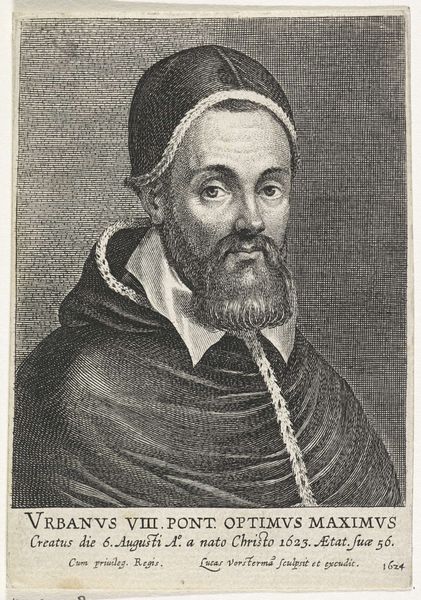
engraving
#
portrait
#
baroque
#
old engraving style
#
portrait reference
#
line
#
history-painting
#
engraving
Dimensions: height 485 mm, width 318 mm
Copyright: Rijks Museum: Open Domain
Editor: We’re looking at Philip Fruytiers' "Portret van Marius Ambrosius Capello," an engraving dating between 1620 and 1666. It's currently housed in the Rijksmuseum. I'm immediately struck by the formality and seriousness of the piece. The details are amazing considering it's an engraving. What do you see in this work? Curator: Well, the somber mood is interesting considering the powerful imagery attached to the bishop. He occupies a seat of power, but I cannot help but notice how he is almost dwarfed by the columns in the background. These strong architectural lines could suggest strength, yet they almost threaten the person within. Notice how the crest or coat-of-arms in the upper right repeats some of those shapes... It is hard to know how to weigh this potent symbolism. Editor: So, do you think Fruytiers might be subtly questioning Capello’s authority, even while portraying him? Or perhaps it suggests tension between church authority and state authority? Curator: It could also speak to inner tension or to a feeling of constraint despite the authority and privilege he carries. Think about the clothing he wears: it could be restrictive and burdensome as much as ceremonial. Also, how might the artist himself feel being in the employ of such a person? The symbols invite layered interpretations. It is not a cut-and-dried portrait. Editor: That’s a fascinating point – that clothing can carry so many potential meanings beyond its practical purpose. I will definitely look at portraits differently from now on! Curator: I think focusing on those layers – what objects *meant* then, and what they mean *now* – unlocks so much about cultural memory. I love how images carry these meanings.
Comments
No comments
Be the first to comment and join the conversation on the ultimate creative platform.

